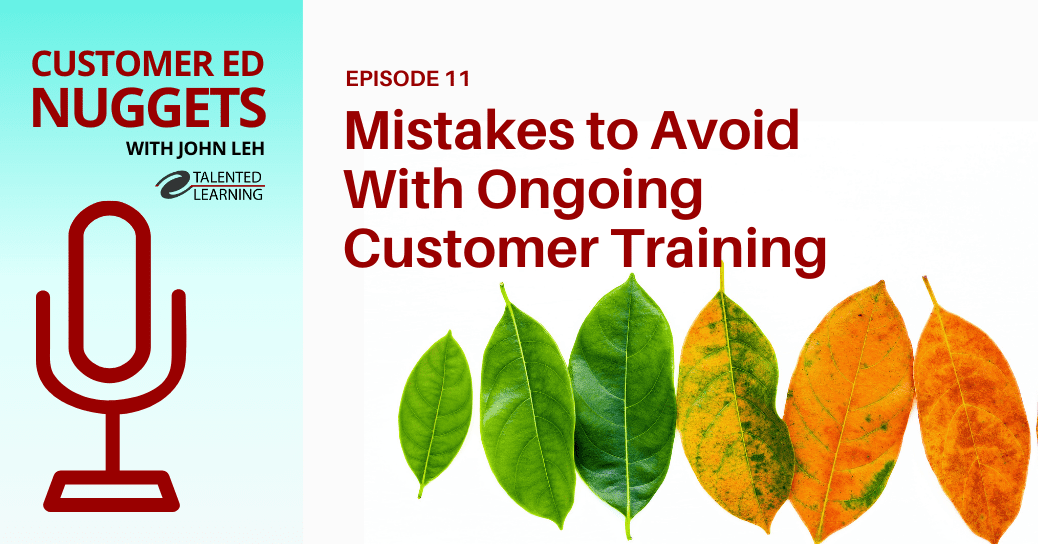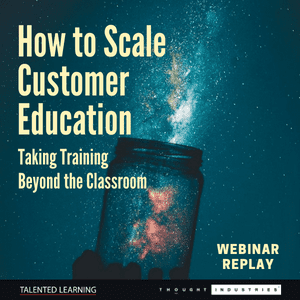
What is LMS gamification? It’s not about playing games in a learning management system. But it is about leveraging game-oriented mechanics to drive interest and involvement in online training content. In other words, it’s about tools and techniques that work together in an LMS to create a more engaging and effective learning experience.
Thought leaders such as Dr. Karl Kapp have helped the learning industry invest heavily in developing techniques for learning content gamification and game-based learning. (In fact, Dr. Kapp recently joined me for an episode of The Talented Learning Show podcast, where he outlined multiple ways that businesses are benefitting from game-based learning, gamification and simulations. Listen to the full interview here.)
However, less is known about gamification at the learning platform level. As independent LMS analysts, for the past three years we have been tracking LMS gamification trends across multiple sectors — associations, academia and commercial training, as well as corporate learning.
LMS gamification can be highly effective in motivating employees to complete mandatory training. However, it is perhaps even more effective in motivating non-employees (such as customers and channel partners) to pursue voluntary training.
This is why LMS gamification has become so popular so quickly in extended enterprise contexts.
But what, specifically, should you expect from a “gamified” LMS? The spectrum of capabilities is broad. Some systems are built from the ground up with gamification at their core, while many offer only lightweight add-on features. Nevertheless, since 2010, the market has been quick to embrace LMS gamification and vendors are adapting swiftly to capture their share of the playing field.
“Winning” LMS Gamification Functionality
Here are five key, cutting-edge LMS gamification capabilities that are making a measurable winning difference in business learning environments all over the world:
1) Points
When learners complete desired activities the LMS awards points to their account. For example, learners can accumulate points whenever they log-in, consume content, complete key milestones or use social learning functionality. Point values are arbitrary and typically vary with learning program objectives and business goals.
Administrators configure values in the LMS, so sometimes points are used strategically to reward specific activities more heavily than others. For example, a learner might earn 25 points when logging in, 50 points after registering for a course and 100 points when successfully completing that course. What are 500 points worth? Perhaps a badge.
2) Badges and Levels
Badges are digital imaged-based awards that learners earn by accumulating a predefined number of points or completing specific goals. For example, when a company wants employees to engage in training for a new CRM software implementation, it may offer a badge based on “participation” points.
To encourage adoption, the LMS awards points for activity such as logging in, completing CRM-related assignments and passing relevant online tests. Once a badge is awarded, it is displayed on a learner’s profile, so all program participants can see it when they log in and use the LMS.
Levels are a special variation on badges. “Leveling up” is a familiar concept associated with pinball machines, Xbox and online games. In an LMS, it’s the ability to earn recognition for accumulating a successively higher volume of points. For example, participants could earn an entry-level learner badge after 10 log-ins, an intermediate-level badge after 100 log-ins and an advanced-level badge after 1000 log-ins.
Badges and levels can be remarkably effective at driving learning participation, however, they get stale quickly if awards seem too cute, too easy to attain or aren’t based on meaningful accomplishments.
3) Open Badges and Digital Credentials
Open Badges. Digital badges. Digital credentials. Micro-credentials. If you’ve heard these terms, you may be confused about where one ends and the other begins. Actually, they are all loosely-defined synonyms.
Essentially, they refer to a digital certificate of completion that recipients can display outside of an LMS and share using the Open Badge standard. Open Badge capabilities are most often found in LMS solutions designed for extended enterprise (non-employee) training.
When associations, academic institutions, commercial training companies and other organizations sell educational content, they want to provide evidence of tangible, enduring value — beyond the knowledge itself — as a reason to buy.
Digital badges are earned exclusively for successful content completion and not participation. A digital badge contains relevant “metadata” such as the badge title, description, date earned, issuer, recipient, expiration date and even specific details about the work submitted by the recipient.
Learners can display digital badges on websites, social media profiles and email signatures or collect badges from multiple sources in “backpacks” by Mozilla or Credly. Why? Digital badges demonstrate professional competency beyond an academic degree. They help people land jobs, earn promotions and win new customers or clients.
4) Leaderboards
A leaderboard is a list of training participants who have accumulated the most points, badges, awards or levels in a learning program. Typically displayed in columns, leaderboards include each participant’s name, image and point totals.
When clicking or rolling over a name on the leaderboard, LMS users see more details — the leader’s profile, awards earned, content the leader has posted and public discussions where the leader has been active. They can also choose to follow or connect with a leader from this listing.
Advanced leaderboards can be configured with specific rules and weights for various activities. They can also be displayed to different learning audiences — differently.
Leaderboards are an effective way to recognize individual achievement and motivate others to raise their game. But perhaps more importantly, they are useful in helping program participants find subject matter experts and share peer-to-peer knowledge.
5) Contests and Rewards
This is where LMS gamification really gets interesting and fun. Contests are limited-time promotions that use rewards to drive mass content completion or group certification.
For example, an organization could incentivize employees to complete annual compliance training by offering a pizza party to the first department with 100% compliance. Or they could offer $10 Starbucks gift cards to the first 10 employees who complete their assigned training. The possibilities are limited only by your budget and imagination.
Extended enterprise learning programs can use the same logic to motivate participants. For example, a software company could drive technical certifications by offering free annual developer program memberships to the first 10 individuals who complete training for a new product.
Sales channel contests are also popular and effective. For example, a manufacturer could offer higher commissions for a limited time to sales reps who update their certifications.
An LMS that integrates with a partner management system or CRM can automate this kind of promotional effort by tracking and managing temporary commission increases in real time. Again, the possibilities for creative training incentives are endless.
Conclusion
LMS gamification is not just a design philosophy. Nor is it just one tool. It is an expanding collection of human-centered LMS capabilities that virtually any organization can leverage to increase engagement for their unique audiences, learning objectives and business requirements.
Learning games may help you develop a skill in an entertaining context. But LMS gamification is more far-reaching than an individual piece of content and it has broader potential to support both individual performance and organizational results. In tandem with an appropriate learning strategy, LMS gamification can make any learning initiative more engaging, effective and rewarding for participants as well as sponsors.
As I often say at the end of a post — fun times ahead.
Thanks for reading!
Want to learn more? Replay this on-demand webinar:
How to Build Successful Learning Experiences: Lessons From Non-Profits and Associations
Every association and non-profit organization is unique. Yet all share common goals – to engage, retain, inform and influence constituents. What exactly does it take to engage learners, support your brand and advance your mission?
Join John Leh, CEO and Lead Analyst at Talented Learning as he hosts a panel discussion with experts who have developed successful online education programs based on highly customized learning platforms:
- Stephen Flatman, VP Examinations, AICPA
- Seewan Eng, Sr. Director of Technology, New Teacher Center
- Edward Daciuk, Principal Learning Strategist, ExtensionEngine
You’ll learn:
- How to build a business case for moving in-person education online
- What it takes to engage learners in an online environment
- How to differentiate your organization through online learning
- When to consider a custom platform that supports high-end learning experiences
- Lessons learned in achieving internal buy-in, project momentum and organizational alignment.
Need Proven LMS Selection Guidance?
Looking for a learning platform that truly fits your organization’s needs? We’re here to help! Submit the form below to schedule a free preliminary consultation at your convenience.
[gravityform id=”18″ title=”false” description=”false”]Share This Post
Related Posts
The Future of Customer Education: Customer Ed Nugget 16
Customer education is rapidly evolving as organizations embrace new strategies and tech. What does this mean for the future of customer education? See what experts say on this Customer Ed Nuggets episode
Education Strategy Mistakes to Avoid: Customer Ed Nugget 15
What does it take to deliver a successful customer education program? It starts with a solid education strategy. Learn how to avoid common pitfalls on this Customer Ed Nuggets episode
Which LMS is Best for You? New Shortlisting Tool for 2024
How can you find the best learning system for your business? Our LMS shortlisting tool can help. Learn about the 2024 RightFit Solution Grid. Free, reliable guidance based on our independent research
How to Build a Learning-Based Business: Executive Q&A Notes
Building and selling online courses may seem easy, but building a profitable learning-based business is far more complex. Find out what successful leaders say about running this kind of business
The Rewards of Community Building: Customer Ed Nugget 14
What role does community play in your customer relationships? Find out why community building is such a powerful force in customer education on this Customer Ed Nuggets episode
Benefits of Training Content Syndication: Customer Ed Nugget 13
If you educate customers online, why should you consider content syndication? Discover 10 compelling business benefits in this Customer Ed Nuggets episode
Top Marketing Skills to Master: Customer Ed Nugget 12
Successful customer education programs depend on professionals with expertise in multiple disciplines. Which marketing skills lead to the best results?
How to Measure and Improve Partner Training ROI
An educated channel is a successful channel. But how do you know if your educational programs are effective? Learn from an expert how to evaluate partner training ROI
Mistakes in Ongoing Customer Training: Customer Ed Nugget 11
Customer education doesn't stop with onboarding. It pays to invest in ongoing customer training. Learn which mistakes to avoid in this Customer Ed Nuggets episode














FOLLOW US ON SOCIAL